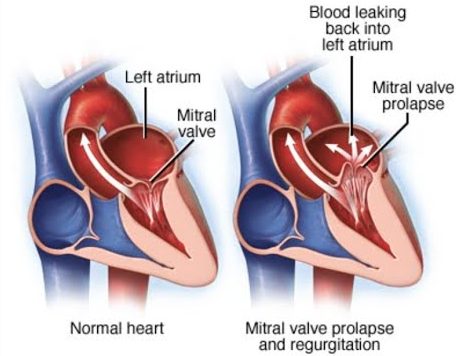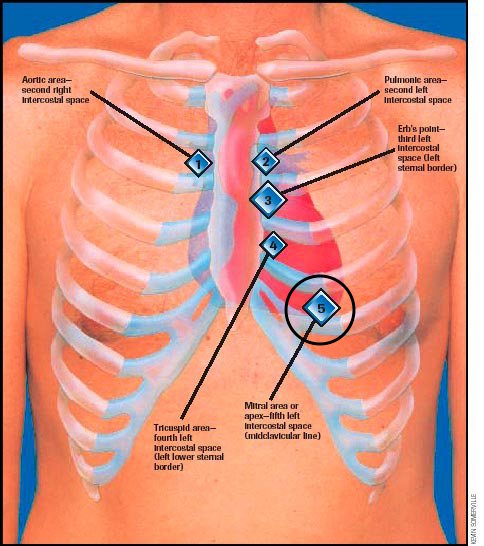Page Contents
WHAT IS IT?
A mitral valve prolapse murmur is a self descriptive term. It refers to a heart murmur caused by the regurgitation of blood from the left ventricle to the left atrium (through a prolapsed mitral valve).

WHAT CAUSES IT?
This heart murmur can be caused by:
- Myxomatous degeneration: caused by connective tissue disorders such as Marfan syndrome or Ehlers-Dalos syndrome
- Rheumatic fever
- Chordae rupture
FEATURES OF AUSCULTATION
Where to listen: this murmur is typically heard best at the apex of the heart.

When to listen: this is a midsystolic murmur and can be best appreciated during systole (BEGINS after S1 and ENDS at S2)
What to listen for: typically this murmur is described as a late systolic crescendo murmur with a mid systolic click. It is loudest just before S2.

IMPACT OF BEDSIDE MANEUVERS ON THIS MURMUR
Various bedside movements can be performed that can help inform what type of murmur is present. The following maneuvers will have the listed effects on an aortic stenosis murmur:
- Hand grip will cause the later onset of the click/mrmur
- Valslava will cause the earlier onset of the click/murmur
- Standing up will cause the earlier onset of the click/murmur
- Rapid squatting will cause the later onset of the click/mrmur
Page Updated: 02.19.2017